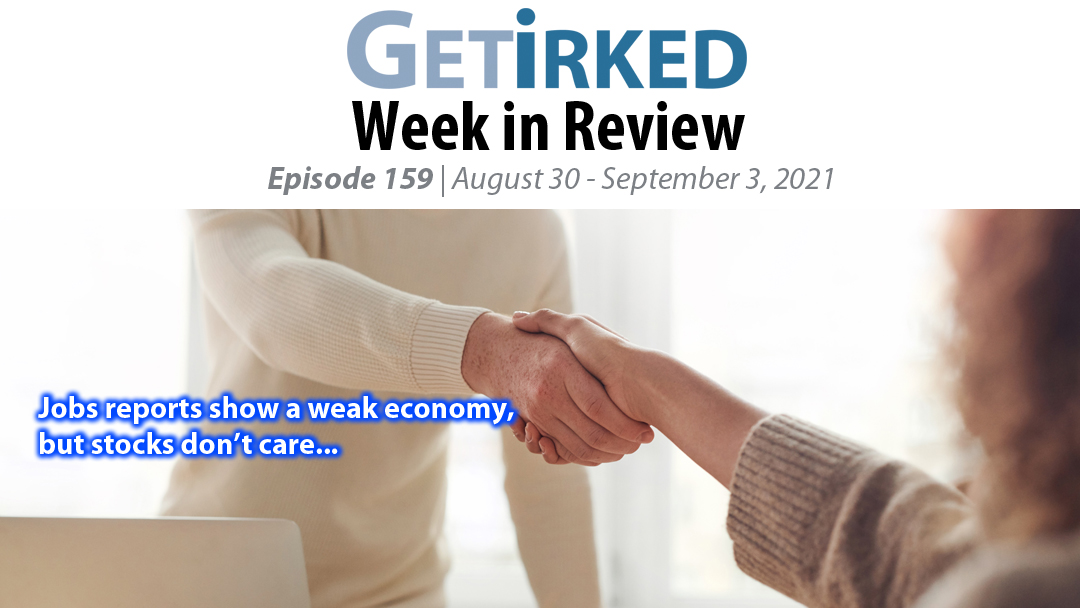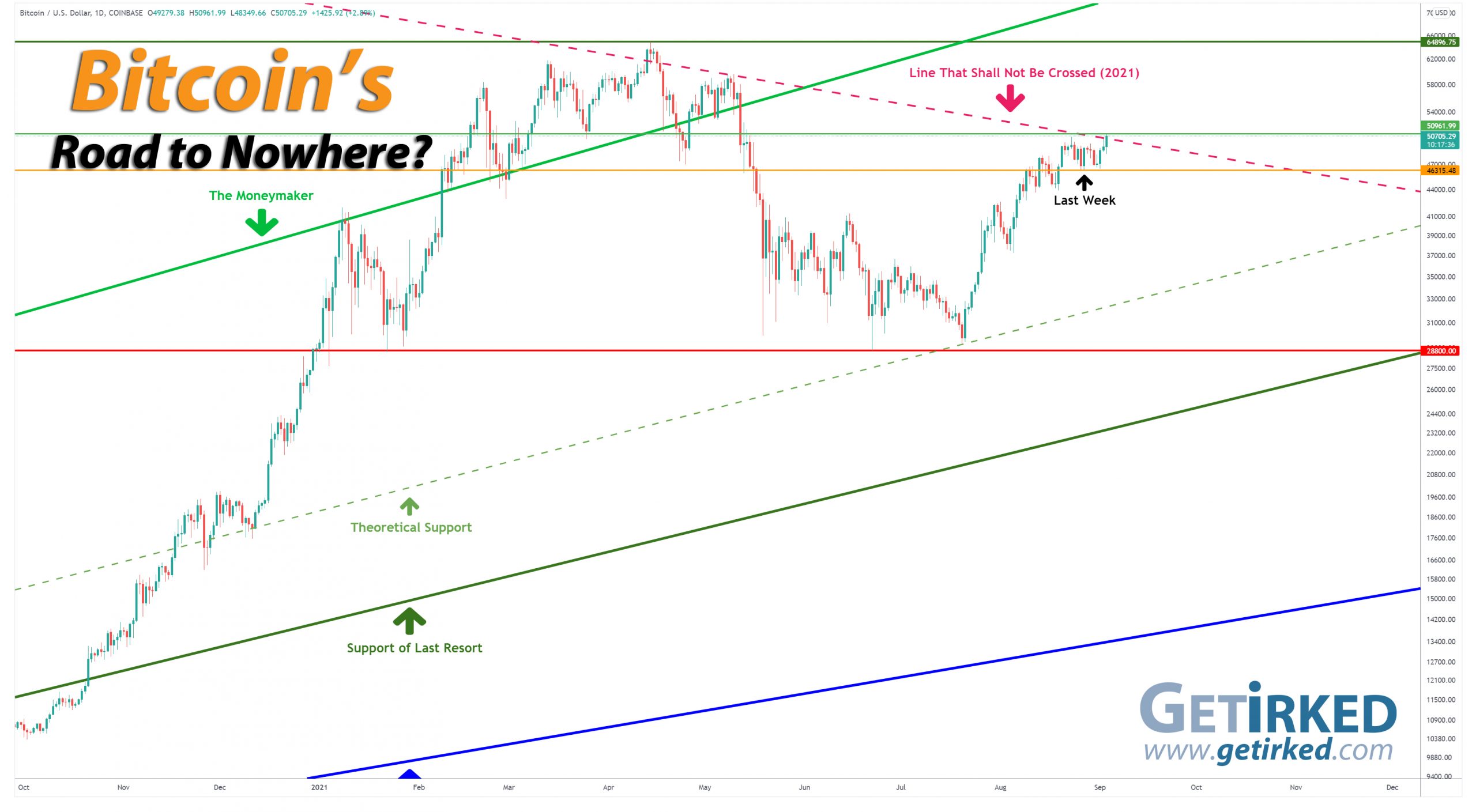Summing Up The Week
Key economic data in the form of employment reports from the government and ADP drove the markets this week, and, with the mixed news we received, the markets remained relatively subdued throughout the week.
Let’s look at the news that moved the markets…
Market News
Hurricane Ida causes oil firms to slash output 91%
Over the weekend, oil firms cut nearly 91% of their U.S. Gulf of Mexico crude oil production – about 1.65 million barrels a day – as Hurricane Ida made its way toward the major U.S. offshore oilfields, reported CNBC. Ida became a Category-4 hurricane – nearly the most powerful categorization – when it made landfall, knocking out power for 1 million residents and causing severe damage to the area.
With the U.S. economy still running on energy in the form of oil-based fuels, a dramatic cut to oil production can result in an increase in oil’s per-barrel pricing.
However, the Gulf of Mexico offshore oil production accounts for 17% of the country’s crude oil production and with the U.S. still importing much of its oil, such a production cut is estimated to raise gas by only $0.10/gallon in the Southeastern and Mid-Atlantic markets.
Private payrolls increase 374K vs 600K estimate in August
On Wednesday, ADP’s private payrolls report showed an increase of just 374,000 new jobs in August, significantly missing the Dow Jones estimate of 600,000, reported CNBC. While this is not good news about economic recovery, the Labor Department’s nonfarm payrolls report, scheduled to release later in the week, has differed widely from ADP’s throughout 2021.
Additionally, even if payroll figures were less than expected in August, the markets still rose as a weaker economy indicates the Federal Reserve would likely keep easy-money policies in place.
Basically, the stock market’s in a “win-win” scenario right now as long as things continue as they are – a weaker economy means easier money, a stronger economy means greater earnings.
Just keep an eye out for those Black Swan events, eh?
Jobless claims total 340K, lowest level since pandemic
On Thursday, the Labor Department reported first-time jobless claims for the past week totaled 340,000 versus the 345,000 estimate, reported CNBC. The new low prompted many pundits to hope that the jobs report coming Friday would counter the ADP report from Wednesday as it has in months’ past.
“Bottom line, we now have the lowest initial filings for claims and smallest level of continuing claims since everything changed in March last year,” wrote Peter Boockvar, Chief Investment Officer at Bleakley Advisory Group. “Just listen to any company that is looking to expand and you’ll hear stories about the difficulty in finding positions so it makes sense that claims continue to decline.”
August jobs report disappoints: 235K vs 720K expected
On Friday, the Labor Department’s August jobs report disappointed dramatically with nonfarm payroll growth increasing by only 235,000 versus Dow Jones estimates of 720,000, reported CNBC. Unlike prior months where the Labor Department report contradicted the ADP private report, this month saw alignment in a very negative outcome.
“The labor market recovery hit the brakes this month with a dramatic showdown in all industries,” said Daniel Zhao, Senior Economist at Glassdoor.com. “Ultimately, the Delta variant wave is a harsh reminder that the pandemic is still in the driver’s seat, and it controls our economic future.”
Next Week’s Gameplan
A bevy of analysts have been warning that September is a notoriously volatile – and negative – month for the markets, however, those figures are largely affected by some seriously-down Septembers in the past.
In other words, the average figure can be misleading with the majority of Septembers actually seeing a move up in the markets.
All this goes to say – you guessed it – the gameplan remains unchanged; have a plan for if the market goes up, have a plan for if the market goes down.
This Week in Play
Stay tuned for this week’s episodes of my two portfolios Investments in Play and Speculation in Play coming online later this weekend!
Crytpo Corner
Important Disclaimer
Get Irked contributors are not professional advisers. Discussions of positions should not be taken as recommendations to buy or sell. All investments carry risk and all readers must accept their own risks. Get Irked recommends anyone interested in investing or trading any asset class consult with a professional investment adviser to determine if an investment idea is suitable to them and their investment goals.
Click chart for enlarged version
Bitcoin Price (in USD)
%
Weekly Change
Bitcoin Price Action
Bitcoin surprises to the upside… again!
Bitcoin bulls proved to be right once more as Bitcoin broke through the $50,000 mark on Thursday once more. On Friday, the crypto showed even more bullish price action, cracking last week’s high and setting a new weekly high at $50,705.29. At this point, I have little faith in this year’s Line That Shall Not Be Crossed (2021), however, I will continue to try to update it as new price action presents.
The Bullish Case
Bulls have the power of proof on their side, for the moment. Bitcoin continues to consolidate while making higher weekly highs, potentially showing the resilience of institutional and retail buying propping up the crypto and preventing further downside. Bulls believe that $28,800.00 represents the new bottom and that higher-highs are in store.
The Bearish Case
Bears point to the resistance at the $50,000 level as the reason for Bitcoin needing a bigger crash before it can make new highs. Bears believe last week’s low won’t hold and the crypto will see a re-test of the $30K mark with many believing a break into the $20K range and lower is still a very likely possibility.
Bitcoin Gameplan
*Trade Closed: +3.02% Gain in 8 Days*
I started taking profits using stop-loss limit orders when Bitcoin made another attempt at breaking the $50,000 mark last weekend. On Saturday, a sudden pullback triggered a sell order which filled at $48,643.29. On Monday, I used a stop-loss limit order to sell a bit more of my position at $47,384.08 when Bitcoin broke through a previous point of support.
Finally, I closed my entire position on Thursday when Bitcoin lost the $50,000 mark with a limit order which filled at $49,712.47. Overall, I made +3.02% after fees (an annualized return of +137.7875%) with a final start price of $47,274.50 and an average closing price of $48,702.19.
Because of the tight price consolidation, the trade only added a negligible amount to my banked crypto, but my discipline won’t allow me to turn a winning trade into a loser – I’d prefer to close a trade and start a new one rather than turn a trade with a profit into trade with a loss.
Planning the next trade…
With Bitcoin knocking me out of my current trade, it’s now time to revisit past performance to try and determine where Bitcoin might pull back.
Given its incredibly tight movements (for the crypto, at least), I’m planning my first buy at less than a -10% drop from Bitcoin’s current levels and then going from there.
Let’s see what happens!
Bitcoin Buying Targets
Using Moving Averages and supporting trend-lines as guides, here is my plan for my next ten (10) buying quantities and prices:
0.269% @ $46,709
0.269% @ $45,787
0.135% @ $43,418
0.135% @ $41,555
0.135% @ $39,939
0.135% @ $37,752
0.135% @ $35,435
0.398% @ $33,008
0.137% @ $32,456
0.635% @ $30,146
No price target is unrealistic in the cryptocurrency space – Bullish or Bearish.
While traditional stock market investors and traders may think the price targets in the cryptocurrency space are outlandish due to the incredible spread (sometimes a drop of near -90% or a gain of up to +1000% or more), Bitcoin has demonstrated that, more than any speculative asset, its price is capable of doing anything.
Here are some of Bitcoin’s price movements over the past couple of years:
- In 2017, Bitcoin rose +2,707% from its January low of $734.64 to make an all-time high of $19,891.99 in December.
- Then, Bitcoin crashed nearly -85% from its high to a December 2018 low of $3128.89.
In the first half of 2019, Bitcoin rallied +343% to $13,868.44. - From June 2019, Bitcoin crashed -54% to a low of $6430.00 in December 2019.
- From December 2019’s low, Bitcoin rallied +64% to $10,522.51 in February 2020.
- In March 2020, Bitcoin crashed nearly -63% to a low of $3858.00, mostly in 24 hours.
- Then, Bitcoin rallied +988% to a new all-time high of $41,986.37 in January 2021.
- Later in January, Bitcoin dropped -32% to a low of $28,732.00.
- In February 2021, Bitcoin rallied +103% to a new all-time high of $58,367.00.
- Later in February, Bitcoin dropped -26% to a low of $43,016.00.
- In March 2021, Bitcoin rallied +44% to a new all-time high of $61,788.45.
- Later in March, Bitcoin dropped -19% to a low of $50,305.00.
- In April 2021, Bitcoin rallied +29% to a new all-time high of $64,896.75.
- In June 2021, Bitcoin crashed -56% to a low of $28,800.00.
Where will Bitcoin go from here? Truly, anything is possible…
What if Bitcoin’s headed to zero?
The only reason I speculate in the cryptocurrency space is I truly believe Bitcoin isn’t headed to zero.
I am prepared for that possibility, however, by knowing I could potentially lose all of the capital I’ve allocated to this speculative investment. Professional advisers recommend speculating with no more than 5% of an investor’s overall assets. Personally, I’ve allocated less than that to speculating in crypto.
I feel that anyone who doesn’t fully believe in the long-term viability of cryptocurrency would be better served not speculating in the space.
On a good day, this asset class isn’t suitable for those with weak stomachs. On volatile days, the sector can induce nausea in the most iron-willed speculator. If a speculator isn’t confident in the space, the moves will cause mistakes to be made.
DISCLAIMER: Anyone considering speculating in the crypto sector should only do so with funds they are prepared to lose completely. All interested individuals should consult a professional financial adviser to see if speculation is right for them. No Get Irked contributor is a financial professional of any kind.
Ways to give back to GetIrked:
Send me a tip via Stripe! Thank you!
Get free money by signing up for an account with my referral link for Schwab
Sign up for Gemini and we each get $10
Click this referral link to get the Brave Browser
If you use Brave, you can also use the Tip function to tip me in Basic Attention Token (BAT).
Suicide Hotline – You Are Not Alone
Studies show that economic recessions cause an increase in suicide, especially when combined with thoughts of loneliness and anxiety.
If you or someone you know are having thoughts of suicide or self-harm, please contact the National Suicide Prevention Lifeline by visiting www.suicidepreventionlifeline.org or calling 1-800-273-TALK.
The hotline is open 24 hours a day, 7 days a week.


